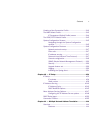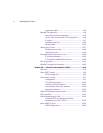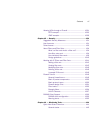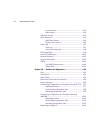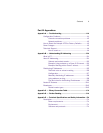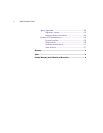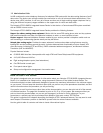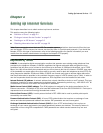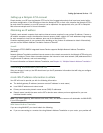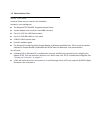
Introduction 1-1
CC
CC
hh
hh
aa
aa
pp
pp
tt
tt
ee
ee
rr
rr
11
11
II
II
nn
nn
tt
tt
rr
rr
oo
oo
dd
dd
uu
uu
cc
cc
tt
tt
ii
ii
oo
oo
nn
nn
OO
OO
vv
vv
ee
ee
rr
rr
vv
vv
ii
ii
ee
ee
ww
ww
The Netopia 4753 Voice/Data Integrated Access Devices (IADs) make it possible for small businesses to take
advantage of the advanced communications technologies previously limited to larger organizations. By
integrating multiple voice connections and high-speed Internet access on one DSL line, businesses can
squeeze the most out of their communications budget.
The Netopia 4753 G.SHDSL Integrated Access Device combines a complete telephone system with a
business-class data router to deliver a customized package of business communications services over DSL.
The Netopia 4753 supports the broad array of phone features offered through your service provider and uses
your existing analog telephone equipment. The Netopia 4753 includes Netopia's sophisticated data routing
engine optimized for small and medium size business needs. These business-class features include IP routing,
firewall, NAT, MultiNAT, DHCP and both PPTP and IPSec VPN functionality.
This section covers the following topics:
■
“Features and Capabilities” on page 1-1
■
“How to Use This Guide” on page 1-2
FF
FF
ee
ee
aa
aa
tt
tt
uu
uu
rr
rr
ee
ee
ss
ss
aa
aa
nn
nn
dd
dd
CC
CC
aa
aa
pp
pp
aa
aa
bb
bb
ii
ii
ll
ll
ii
ii
tt
tt
ii
ii
ee
ee
ss
ss
Office telephone systems are commonly one of two types, PBX (Private Branch Exchange) or Centrex (Central
Office Exchange). Technically, Centrex is a subset of PBX.
PBX users share a certain number of outside lines for making telephone calls external to the PBX. Most
medium-sized and larger companies use a PBX because it's much less expensive than connecting an external
telephone line to every telephone in the organization. In addition, it's easier to call someone within a PBX
because the number you need to dial is typically just 3 or 4 digits.
Centrex is a newer variation on the PBX. It is a PBX with all switching occurring at a local telephone office
instead of at the company's premises. Typically, the telephone company owns and manages all the
communications equipment necessary to implement the PBX and then sells various services to the company.
Small- to medium-sized businesses need two kinds of services: Internet presence and voice telephony. But they
don't need the additional burden of maintaining switching equipment or administering IP and voice services for
their offices. An Integrated Access Device (IAD) that offers high-speed Symmetric (same speed upload and
download) DSL for IP connectivity and a PBX that somebody else (the phone company) administers is the simple
solution.
At the phone company's central office, where all the big switch gear is, there are two kinds of switches for the
two kinds of services, voice and data. The voice switch is called a Voice Gateway and the data switch is called
a Digital Subscriber Line Access Multiplexer (DSLAM) or access concentrator. Both the voice and data signals
are concentrated at the DSLAM and forwarded either to a data router or to the Voice Gateway. Both kinds of
switches are manufactured by a variety of companies. The IAD must be capable of communicating with a wide
array of possible combinations of Voice Gateways and DSLAMs.



